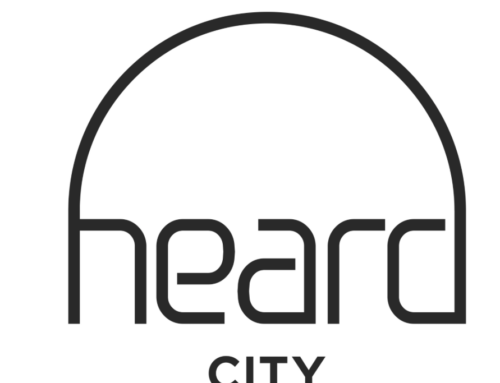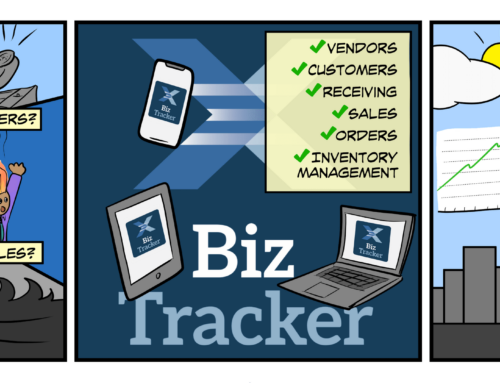
There is an urban legend that at the beginning of the Space Race, NASA spent millions of dollars developing a pen that could write in zero gravity. The Russians came up with a much simpler solution!
They used a pencil!
How often have each of us spent an enormous time laboring over a seemingly complex routine with subscript after subscript, variable on variable, etc. only to wake up in the middle of the night with a simple solution right in the frontal lobe? Or we’ve looked at something we did a year or two back and gone “What the #@%* was I thinking!”
The truth is that we often make things too complicated for ourselves by overthinking them. Or we are so caught up in the habit of acting without conscious thought that we end up down a rabbit hole faster than Alice could pour a cup of tea and, once we are in the rabbit hole, we just dig faster and faster until we reach the other end.
Now, this isn’t all bad and the stream of consciousness often produces quite extraordinary results but sometimes we simply cannot see the forest for the trees and we need to take a mental step back and evaluate the situation from a different point of view.
Many years ago, in a previous incarnation, I was in the art business and sold, among other things, lithographs by Joan Miro. If you don’t know the name, think of very expensive artwork that looks as if a 4 year old could have done it. That was my first reaction when I saw one of his pieces!However, a dealer friend of mine, gave me some very good advice which is very relevant to a lot of what we do as FileMaker developers and professional problem solvers. He told me to take a mental sidestep and look at the picture, not as a work of art that I needed to understand, or ‘get’ but to simply enjoy it for its color, its shapes and patterns; in other words, accept and enjoy it for what it was not what I thought it should be.
The result of doing that simple exercise was that I fell in love with Miro’s work. I realized that it was far more sophisticated and complex than any other artist’s work that I knew. I discovered that the balance between positive and negative space was so precise that if you do, as I have done, and scan one, separate it into layers and then move one layer just a fraction of an inch, the whole balance and harmony of the piece is completely destroyed.
So what has abstract art, and more to the point, what has zen got to do with FileMaker? Everything and nothing; or in zen phrasing; being and not being! What I am talking about here is developing without actually developing; of actually letting your mind roam free of any distractions and without any preconceptions; of letting your subconscious mind do what it does best which is …
… solve problems.
FileMaker is, and always has been, an extraordinary tool. This is not for what it is or how it works but that it allows the creative mind to come up with methods of doing things that are often, on the surface, totally illogical and yet they work. We call these things ‘work-arounds’ and, over the years, many of us have become incredibly adept at finding them.
In earlier generations of FileMaker, coming up with these ‘work-arounds’ was an essential part of the development cycle since FileMaker itself had severe limitations, programmatically, and we, developers, had to find ways to overcome the limitations themselves. To do so, many of us, got into the zone with FileMaker; that is, we became one with it.
Now, this probably sounds very metaphysical and woo-woo but it really isn’t! It is simply a matter of getting in tune with whatever you happen to be doing and we all have the capacity to get in tune with whatever we do. The problem is that is difficult to stay in tune and there is a reason for that which is nothing more than we start to doubt ourselves! “I can’t possibly be this good” we say as we move a chess piece, setting up an unbelievable mate in 8. The next thing that happens is we completely forget the next seven moves that a second earlier we had mapped out in our mind; gone and in that instant we are no longer in the zone.
It is this capacity for self-doubt that anchors and limits each of us; it is the box that we live inside and which we need to break out of; it is the barrier to greatness.
If I were to hand you a box with a lid on it and tell you that the contents of the box were preventing you getting everything that you have ever wanted in life, would you open the box eagerly or with trepidation? If you took the lid off and gazed inside only to find that the box contained a mirror and that all you saw was yourself, would you get the point or would you dismiss it?As FileMaker has evolved over the years, we developers have also evolved. We have embraced, sometimes reluctantly, new functions and functionality; we have learned new skills and we have had to unlearn old ones. In this evolution, our thought processes and synapses have changed; we have, in many ways, become more than we were and we have had to as FileMaker itself has become much more than it was.
Many of us struggled mightily with the Relationship Graph; we bemoaned the passing of the old, pre-7, methodology of one-way relationships and concatenated fields that we could view as a list. We looked at the graph and its myriad connectors and table occurrences and moaned in exasperation; we tore our hair out in frustration with the concept of context but we persevered; after all the genie was out of the bottle and it wasn’t going back in. So we studied and we worked and we made numerous mistakes but eventually we each came up with our own way of making sense of it all and now, we are back to Zen.
Zen is, of course, much like FileMaker database programming in that it is idiosyncratic and it differs from one person/situation to another. If you took 5 of the top FileMaker developers in the world and gave them a problem to solve, each would come up with an entirely different solution and all of them would work flawlessly. Will one solution be better than another? Very unlikely! Will be one more elegant than another? Possibly. Does that make a difference? Again, very unlikely. Each of our developers will have come up with their best solution and, while they might look at the others with interest, their own solution will still be the best of the bunch; after all, one cannot sublimate the ego entirely!
Ultimately, in everything we do, our brain requires that it makes sense; of course, there are exceptions – the world is full of lunatic asylums but, fundamentally we have to learn to let go and trust. Tiger Woods doesn’t know how he swings hard enough to hit a wedge shot 95 yards when he could hit it 150 with a full swing; he just trusts his brain to make that decision for him; I don’t know how I know when I’ve put enough water in the coffee pot for 8 cups – I just do! And there are numerous examples that each of us can relate to that make no sense when we try to analyze them. The key thing here is that it, they make sense to our brains and, if we trust our brain, the chances are good that the decision, instinct (or whatever you choose to call it) is right. I call it Zen.





Leave A Comment